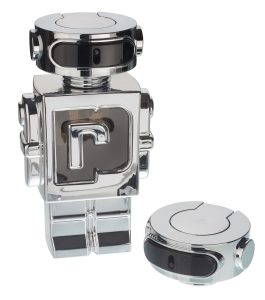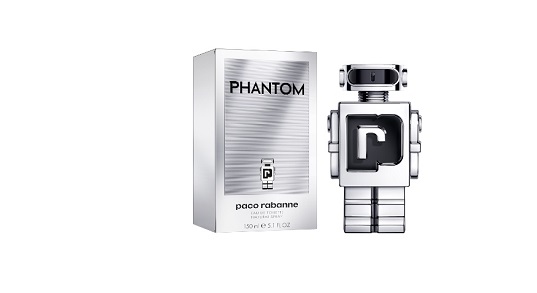Phantom, the first connected fragrance in the world, houses an ST25TV02K NFC tag in its spray cap, enabling Paco Rabanne to offer unique features to customers. The mechanism is straightforward. Users bring their phone to the bottle and a notification appears sending them to a URL. The container, shaped like a robot, thus becomes a gateway to the fragrance’s world and services. At the moment, Paco Rabanne offers customers a playlist of songs that were at the top of the charts on a specific day of a particular month. For instance, customers can see all the trending songs on their birthday throughout the years. The company also provides an Instagram sticker in the shape of the robot for whimsical selfies. The first bottles became available in mid-July to travel retail stores only. Paco Rabanne has then been releasing its new fragrance to stores worldwide in August.
Adding Electronics Where There Was None, A Modern Minefield
Near Field Communication (NFC) brought the ability to add electronics to items that previously had none. For instance, some winemakers now use type-5 tags for anti-tampering, asset tracking, and brand building. However, adding digital connectivity to a product can be a minefield. The technology must work everywhere, regardless of each country’s regulations. The experience must be flawless for all customers, or users will hate it, negatively impacting the overall brand. And, there must be a significant added value, or the technology will appear meaningless. Put simply, companies struggle to figure out when and how to add digital connectivity to their products because they know that a wrong implementation may be damaging.

Phantom, by Paco Rabanne, is highly symbolic because it shows that it is possible to add digital connectivity to a fragrance and do it well. As the company explained, its people understood that adding NFC was viable and essential after experimenting with ST tags. The ST25TV02K supports the ISO 15693 standard, which offers a long enough range. The device has an internal tuning capacitance of 99 pF. Hence, it allows for a small antenna that can fit in a tight space, in this case, the bottle’s diffuser. Moreover, the device is a certified type-5 NFC tag thus offering significant interoperability with NFC-enabled smartphones. Ultimately, Paco Rabanne finds itself in the position of inaugurating a new trend in the consumer market. A few years earlier and the experience wouldn’t have been as optimal. A few years later and the company would just be one among many.
Phantom: Why Adding NFC Is the New Norm
A Tool For World Building
Paco Rabanne chose a unique approach with Phantom. Often, companies integrating NFC into their product have business features in mind. Many use the technology to track inventories, prevent theft, or simplify customer support. However, the first connected fragrance took a different approach by first focusing on world-building. The fashion brand went beyond the simple robot shape to create a gateway to online services. Hence, the Phantom case study is interesting because the NFC’s integration first served the customers themselves. As we sat down with Paco Rabanne, the company explained that they always try to take everyday objects and transform them into something unique. It was thus natural for them to turn to NFC as it fits right into their strategies and values.
A Tool For Building a Better World
Adding NFC to Phantom had other practical values as it enabled Paco Rabanne to be much more environmentally friendly. Indeed, the 150-millilitre (5 oz) version of the fragrance is refillable. The problem is that such a feature is scarce in that industry. As a result, customers aren’t expecting it and aren’t familiar with it. By integrating the ST25TV02K, the designer can now send users a video showing how to refill their container. In turn, such a feature will help reduce waste while offering customers incentives to join the Phantom environment. Hence, while some will ask why a fragrance needs an NFC tag, Phantom demonstrates the necessity of the technology when trying to offer a better experience for users and the rest of the world.
Another exciting aspect of this case study is that Paco Rabanne plans to build on its infrastructure. The company is looking into business-oriented features as well as additional services for customers. Paco Rabanne shared that they could focus on the fragrance and the creation of better user experiences and services because they didn’t have to deal with any complex technological matters. ST and its partners simplified the use and implementation of NFC tags. As a result, the engineers of the fashion brand built an eau de toilette first and expanded its presence with an NFC tag. They didn’t have to work on the tag first and build the fragrance around it. As Paco Rabanne told us, they learned that creating a connected fragrance was not as difficult as they once thought.
Phantom: Why Adding NFC Is Easier Than Expected
Minimal Capital Expenditures
Many companies fear that adding digital connectivity will hamper their workflow. As the process is foreign to their operations, they believe it will demand a lot of time, effort, and money. However, the Phantom case study shows the exact opposite. Paco Rabanne itself, a company that never dealt with NFC before, worked with existing teams without ad hoc hires. Their engineers started with an ST25 Tag Bag kit, like the one we used in our iOS App Clip How-to. The teams then understood the technology and rapidly created proofs-of-concept with enough features to give a faithful overview of the final product. As a result, the company focused on developing all the web services in-house instead of devoting all resources to the NFC technology itself.
ST worked with Paco Rabanne to make the NFC implementation as smooth as possible. As a result, our experts collaborated with Paragon ID, the company responsible for creating the inlay containing the ST25TV02K and its antenna. After that, VPI (Beauty division of Faiveley Plast group) conceived and manufactured the robot’s cap to integrate the contactless solution into it. Finally, Paco Rabanne receives the empty containers, checks that everything is functional, and fills them with the fragrance. Interestingly, companies didn’t have to retool entire factories, massively transform production lines, or rethink manufacturing. The release of Phantom thus highlights the maturity of the technology and its ability to integrate existing processes.
Following Phantom
The Phantom case study shows that the public and the manufacturing industries are ready for more NFC-enabled products. As a result, the next step for engineers is to start exactly where Paco Rabanne began. Teams can grab an ST25 Tag Bag Kit for less than US$30 and download the ST NFC Tap application for iOS and Android. The development solution will enable programmers to write NDEF messages and test essential features such as Type-5 custom commands to create a proof-of-concept.
For more information, visit blog.st.com/phantom








